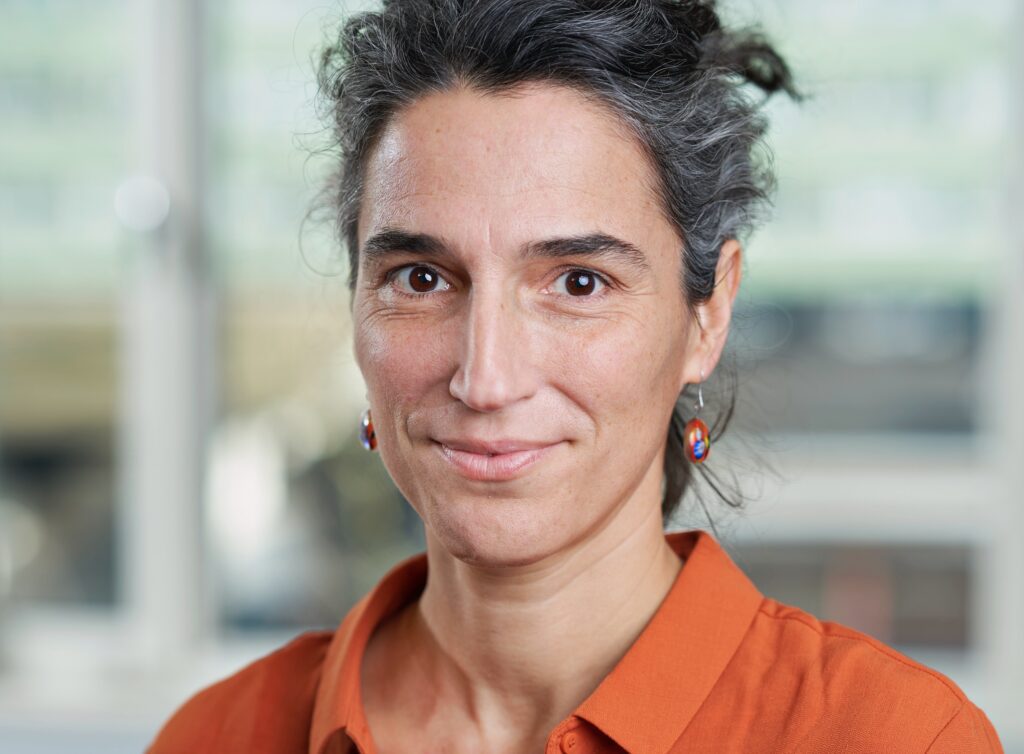This article has been translated with DeepL.
HELLO THERE! Professor Ester Barinaga – author of a new book on complementary currencies – “Not more difficult than hosting Eurovision”
- Published: 15 May 2024,
- 8:19 AM
- Updated: 15 May 2024,
- 11:48 AM

The social innovation of local currency is today a good complement to the mainstream monetary system in many countries. It is particularly important in times of crisis and budget cuts. But in Sweden, there is widespread ignorance of the phenomenon and fear of the new. That’s according to Ester Barinaga, Professor of Entrepreneurship at Lund University, who recently published the book Remaking Money for a Sustainable Future: Money Commons (free download). In it, she describes local currencies and how they can help us get out of economic crises – if we dare to invest.
You have been researching local currencies for many years. What’s the deal with them?
– It is a monetary system that complements the national currency and is designed according to local needs. How it is designed depends on both the purpose of the currency and the actors involved in the initiative.
– Sometimes it is the public sector, the city, that runs the currency together with businesses and citizens. Cities introduce these currencies as intruments to advance a variety of purposes. For example, to integrate people into the labor market or to incentivize people to make more sustainable choices in their everyday lives.
Give examples of a successful local currency.
– Wow, there are so many all over the world. A local currency is that of Lisbon, Portugal, where a district director was tired of with the city’s residents not sorting their waste, despite major campaigns. At that time, the district decided to introduce a system whereby people were paid in local currency for every kilogram of rubbish they sorted. This boosted waste sorting among people, who could happily run off to buy buns or tomatoes in local shops for the ‘new’ money. In just three months, the city had achieved sustainable behavior change.
– The book includes examples of similar Spanish and Brazilian urban currencies that encourage the green transition or act as a living wage.
– In other cases, only traders use the currency among themselves to sell goods and services with each other. In the book, I write about the local currency “Sardex” in Sardinia, Italy, which small and medium-sized enterprises started after the 2008 financial crisis. It is currently used by over 4 000 entrepreneurs. Switzerland also has a complementary currency, which was launched in 1934 and is still used today by small businesses. This has proven to be a successful recipe for economic crises.
The book provides several international examples of how local currencies are being used to tackle local economic crises, but also other major societal challenges such as poverty and the climate crisis. How could local currencies be used in Sweden?
– In just as many ways. If we take the current recession as an example, a large number of entrepreneurs would avoid bankruptcy if they had a local currency to buy and sell with. This is mainly between businesses.
– Because people don’t spend as much money in recessions, entrepreneurs find it harder to earn money to pay bills or make the investments they need to be competitive. Trading in local currencies instead would create greater resilience for businesses.
– In the Netherlands, two major cities, Groningen and Emmen, have their own local currencies which they use for different purposes. In one project, residents were paid with the city currency to answer a survey on their consumption patterns. With that money, they could then shop in the local stores. So the currency can also encourage consumers to spend more in recessions.
How do local currencies fit with the welfare state and tax revenues?
– It all depends on the city currency in question. In the Netherlands, for example, shops exchange the local currency for Euros. And in a city in Catalonia, municipal fees and taxes can be paid in the local currency. So there are many models for it.
Who should definitely not miss reading your book?
– Everyone should read it of course (laughter). But I would be particularly pleased if municipal officials and local politicians read it. That is where we need to start. There are too many powerful lobbies in the banking and financial sector to change the conventional monetary system. But at the municipal level, good examples can emerge that can then be taken forward.
– Some people think it’s a big deal to get a local currency going. But it is not a bigger project than organizing Eurovision. However, it is more foreign, so it takes courage.
Contact ester.barinaga@fek.lu.se
Title: Remaking Money for a Sustainable Future: Money Commons (free download)
Author: Ester Barinaga
Publisher: Bristol University Press
Year of publication: 2024
ISBN: 9781529225372 (hardcover), 9781529225396 (e-book)




